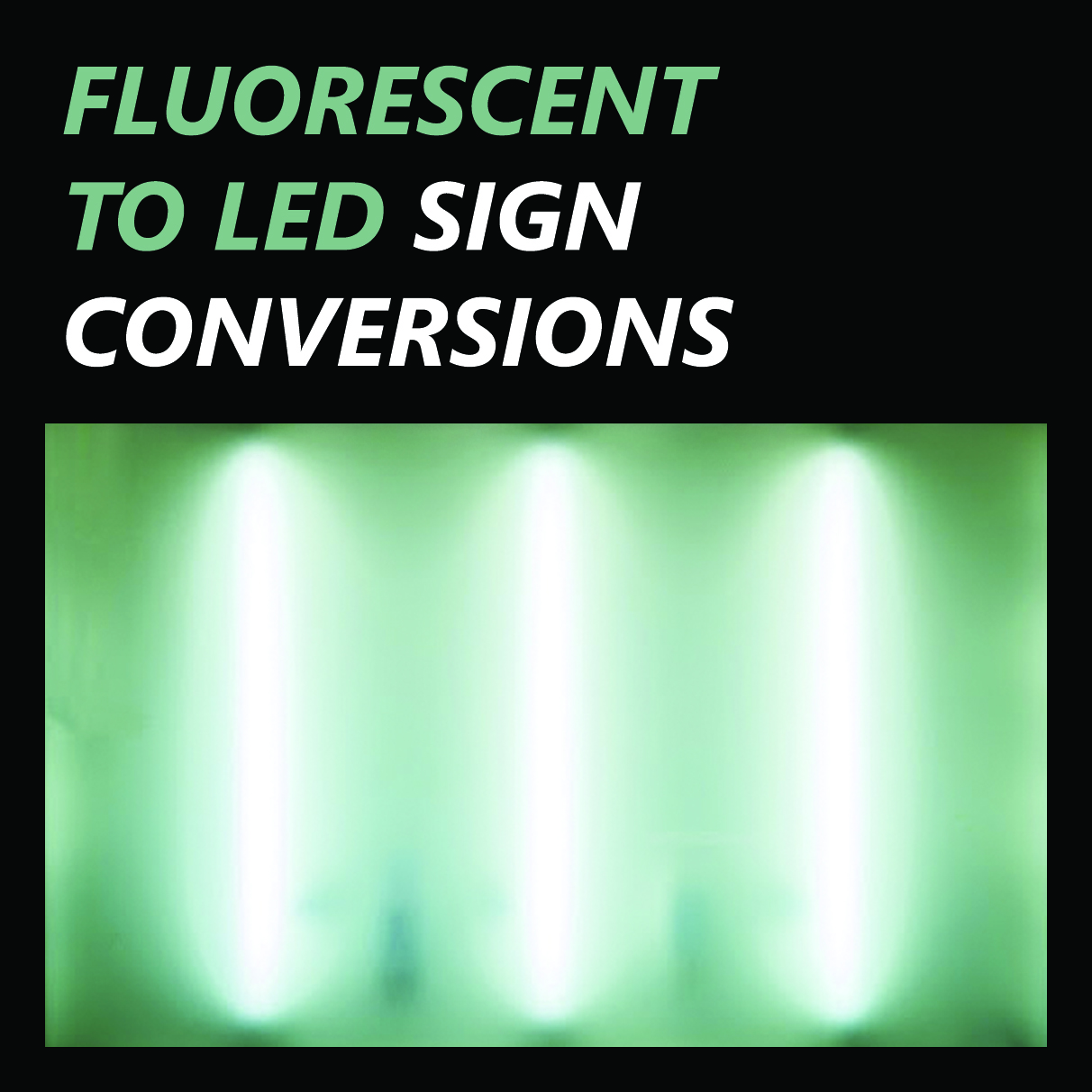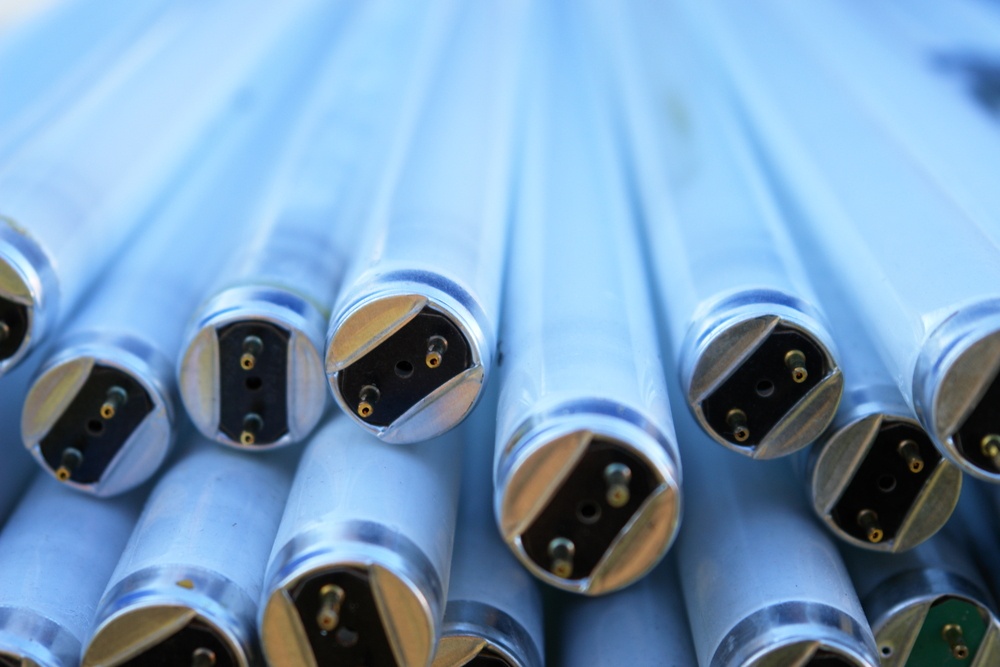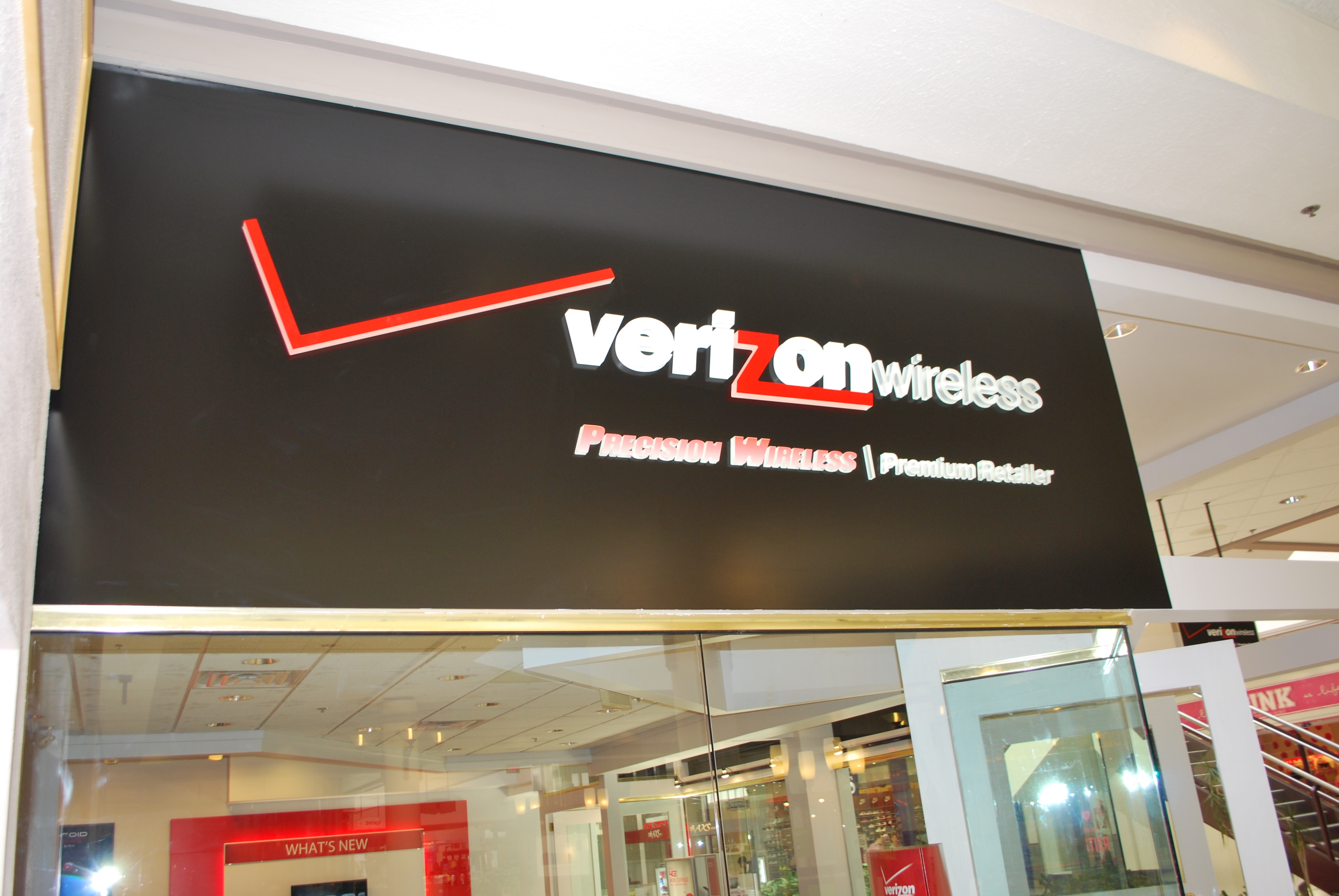
Just like fluorescent is the standard for indoor lighting, it was once the main option for a variety of lighted signs. Tall pylon signs and boxy cabinet signs in particular have traditionally been outfitted with florescent tubing similar to what is seen in office lighting. Compared to the popular incandescent lights of days past, fluorescent lights are considered an energy-saving alternative.
Unfortunately for fluorescent, though, it is no longer the most energy-efficient solution for a lighted sign. Many business owners and property managers are upgrading their signs from fluorescent to LED, either by having their signs retrofitted with LED tubing or replacing the whole sign. Let’s discuss why it may be a smart idea to make the switch from fluorescent to LED.
Drawbacks of fluorescent lighting
While fluorescent lighting has been a reliably inexpensive lighting option for decades, it has some drawbacks. One is that it looks outdated next to brighter, more modern lighting options (such as LED). Like neon, fluorescent gives off a softer glow and simply can’t produce clear, bright light the way LED tubing can.
Fluorescent bulbs are also fragile, so they often break while being transported or installed, and they contain toxic mercury, which must be disposed of safely. Plus, once installed, fluorescent bulbs are prone to being harmed in storms, especially if the sign was improperly constructed or installed. Even if your fluorescent bulbs do not break during transport or a storm, they’re likely to burn out on their own—and frequently. Typically, fluorescent signs need their bulbs replaced 2-3 times a year. While fluorescent bulbs themselves are inexpensive, it becomes necessary to pay for the replacement services.
Benefits of LED-lit signage
LED lighting is clear and bright; unlike the soft, yellowish glow of a fluorescent bulb, LED bulbs can produce pure, white light. It is highly energy-efficient, and the lighting elements of your LED sign will require the most infrequent maintenance. Therefore, by putting up a lighted sign that uses LED instead of fluorescent, you’ll not only see your electric bills go down; you’ll also save costs on maintenance and repair. An LED sign can outlast a fluorescent sign easily by remaining bright for anywhere between 50,000 and 100,000 hours. LED gives off significantly less heat than fluorescent, so you don’t have to deal with the risk of overheating. When your LED bulbs or tubes do need to replaced, they can easily be recycled.
LED retrofitting for fluorescent signs
If you have a cabinet sign, pylon sign, or any other type of sign that’s still using fluorescent, you may be thinking that you really need to get with the times and make the jump to LED. With the help of skilled sign technicians, it’s not actually necessary to replace your sign in order to get LED. The process of converting a fluorescent sign to LED is known as retrofitting (and the same process is used for replacing neon with LED).
 Is it time for a new sign altogether?
Is it time for a new sign altogether?
Retrofitting is a great option for business owners who want to save costs on their signage, and saving costs may very well be the reason you’re thinking about switching to energy-efficient LED. However, if your sign is looking a little old and tired, your best bet may be to replace it entirely and invest in a shiny new LED sign. By working with your sign provider, you can determine whether your sign is in good condition for retrofitting or if it’s worthwhile to replace it entirely. Either way, one thing’s for certain: LED signage is the way of the future, and a modern sign has no business using inefficient fluorescent lighting.


